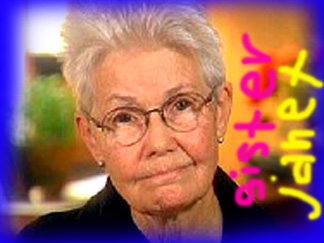
I have more news about Richard LoCicero specifically—-and about the state of homelessness in Los Angeles County in general.
Both reports are unsettling.
First let’s talk about Richard.
If you’ll remember when we checked in with him last week, Richard was back in the hospital for congestive heart failure, a condition that is much of the reason this well-educated, former-college teacher has been homeless for the past year or so.
A summary of the events that got him there is as follows: At age 61, Richard needs an ongoing oxygen supply to control his worsening CHF.
But, although getting a tank courtesy of SSI is not a problem, finding a safe place where he and the tank could live, was not an easy matter. Except for the time every month when he would use part of his SSI check to spend a few days in a Motel 6, Richard was on the street. Since a tank was way too heavy to lug around, he tried to make do without it. Thus his blood became less and less oxygenated, which in turn exacerbated his condition.
Then two Fridays ago, on October 17, something happened to push his health over the edge: Richard got robbed after he had fallen asleep on a bus bench in Anaheim. A guy came up and grabbed his backpack containing his money and more importantly, his medications—and just ran off. The combination of his already low oxygen levels and his now absent medication caused Richard to land in the hospital by the weekend. There he was immediately put on back on oxygen and treated for a multiplicity of other ailments.
(For those of you new to this story, the background on our homeless friend, Richard, may be found here.)
Richard remains in Coastal Community Hospital in Santa Ana, but his condition has worsened. For the past few days he has been in ICU, but as of last night at about 6 p.m., he was transferred to a unit that provides more care than a regular room, but not as intensive as ICU.
I spoke to his nurse last night, a very nice woman from Yorkshire, England, named Deborah (or is it Debra?). She was worried about his prognosis, she said.
As it stands now, the strain on his heart has been considerable due to the congestive heart failure, which is the worst of his underlying conditions. He still has the cellulites on the back of both of his ankles, which is causing him considerable discomfort. And he is diabetic, which does not help.
“And when he was living out of the street, he went without oxygen so often, for so long,” Deborah said. “It’s difficult to know what got damaged.
On the upside—if there is an upside—Nurse Deborah said she found Richard fascinating to talk with, and assured me that his intellect is still up and running. (I’ve talked to Richard several times, but holding the phone is hard for him, so the conversations have been brief.)
Last week, when Richard sounded better, I spoke at length with Anat Rubin, the former hot shot reporter for the Daily News, who got so fed up with the collapsing news business, that she went to work for L.A.M.P Community, as their director of public policy. (LAMP is well known Skid Row provider for the homeless)
Anat said that LAMP was going to try to send someone to see Richard on Friday or today. The idea was to bring him up to Los Angeles, and get him into one of L.A.M.P’s Skid Row facilities, in particular one that had some degree of onsite medical services.
Nurse Deborah said that she was not altogether sure if Richard could recover to the degree that he could be in a shelter. “But maybe. We’ll just have to wait and see.”
In the meantime, according to Sunday’s Daily News, a version of Richard’s situation (albeit without his plummeting physical problems) is being duplicated all over Los Angeles County as the economic meltdown combined with the mortgage crisis has produced a new stream of homeless who are highly educated and formerly middle-class.
Here are some clips from the Daily News report:
In Los Angeles County – the nation’s homeless capital - advocates say they are seeing real-estate agents, lawyers, business owners, pre-med students and other highly educated people losing their jobs and becoming homeless.
The Burbank Temporary Aid Center has experienced a 66 percent increase in requests for assistance in the last 18months, Executive Director Barbara Howell said. About half of those seeking help are middle-class people experiencing homelessness for the first time.
[SNIP]
Read the rest of this entry »
 Celeste Fremon
Celeste Fremon
 21 Comments »
21 Comments »








